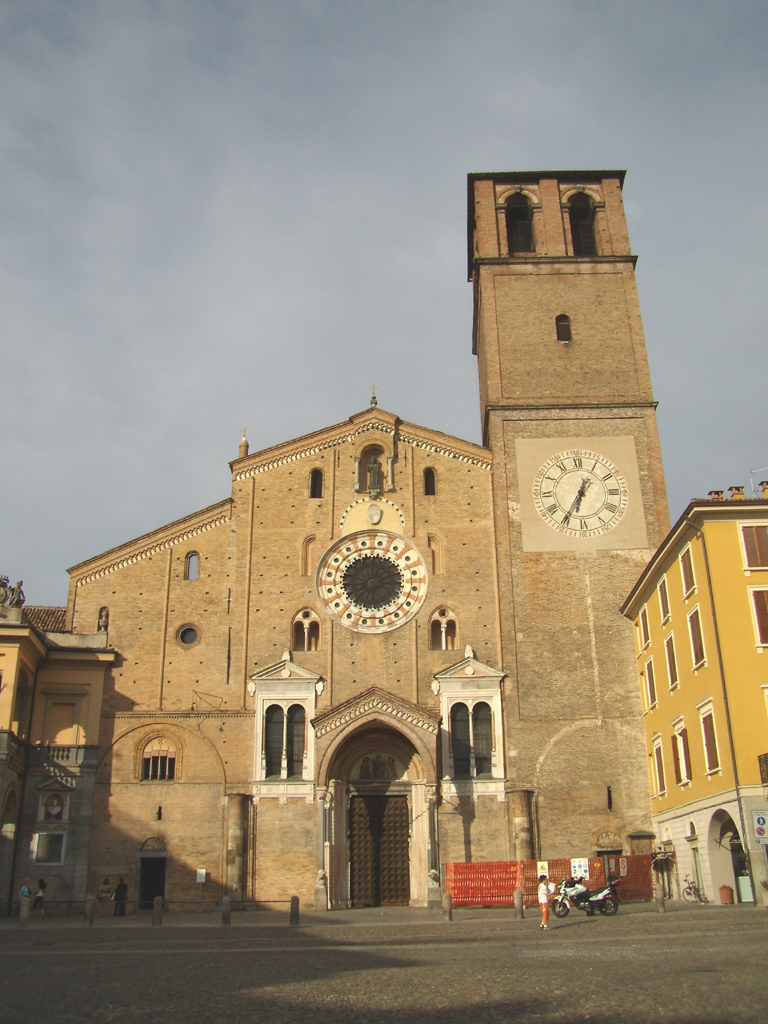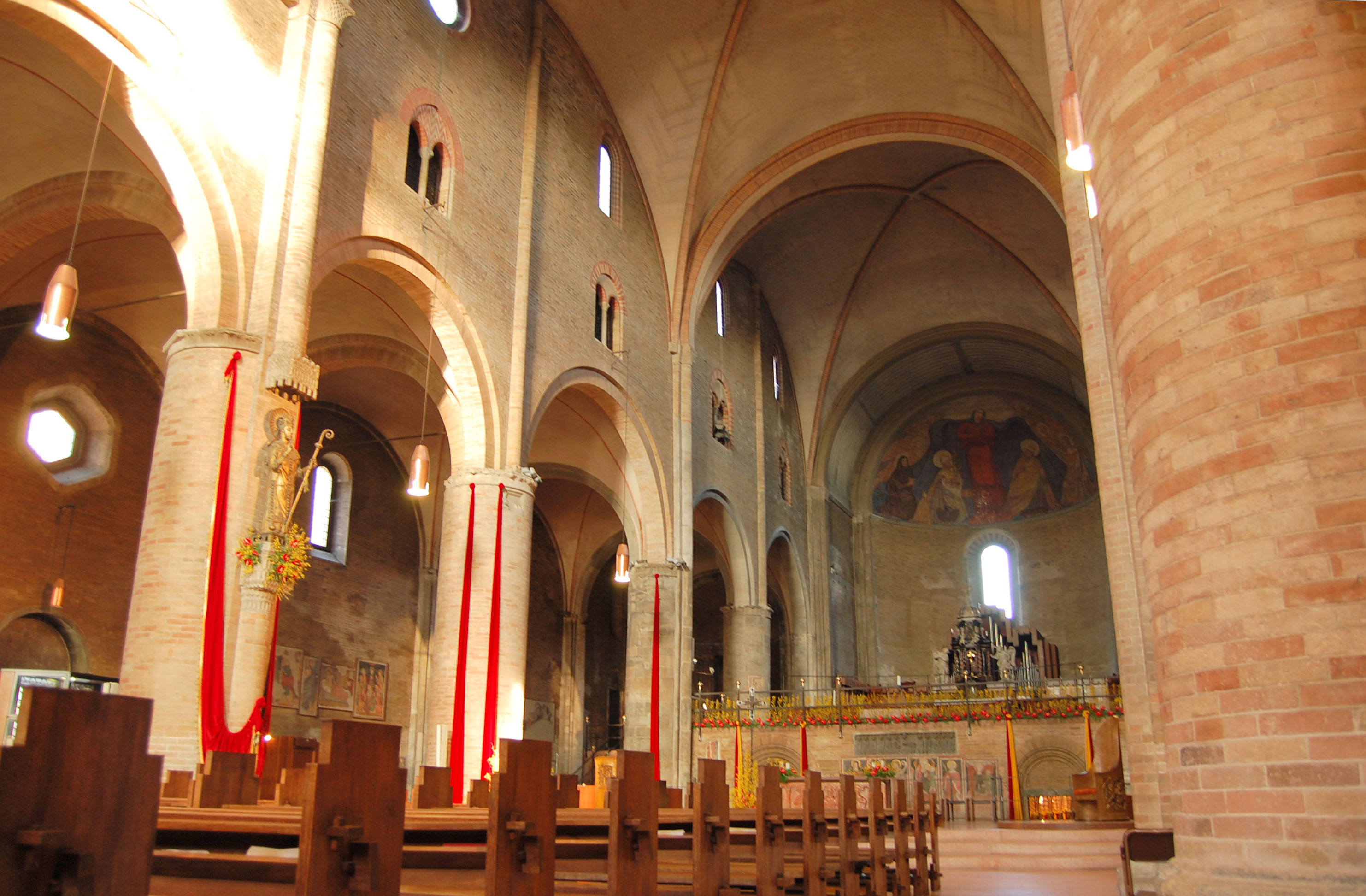Lodi Cathedral on:
[Wikipedia]
[Google]
[Amazon]


 Lodi Cathedral ( it, Duomo di Lodi, ''Basilica Cattedrale della Vergine Assunta'') is a
Lodi Cathedral ( it, Duomo di Lodi, ''Basilica Cattedrale della Vergine Assunta'') is a

 Lodi Cathedral ( it, Duomo di Lodi, ''Basilica Cattedrale della Vergine Assunta'') is a
Lodi Cathedral ( it, Duomo di Lodi, ''Basilica Cattedrale della Vergine Assunta'') is a Roman Catholic
Roman or Romans most often refers to:
*Rome, the capital city of Italy
*Ancient Rome, Roman civilization from 8th century BC to 5th century AD
*Roman people, the people of ancient Rome
*'' Epistle to the Romans'', shortened to ''Romans'', a lette ...
cathedral
A cathedral is a church that contains the '' cathedra'' () of a bishop, thus serving as the central church of a diocese, conference, or episcopate. Churches with the function of "cathedral" are usually specific to those Christian denomination ...
in Lodi, Lombardy
Lombardy ( it, Lombardia, Lombard language, Lombard: ''Lombardia'' or ''Lumbardia' '') is an administrative regions of Italy, region of Italy that covers ; it is located in the northern-central part of the country and has a population of about 10 ...
, Italy
Italy ( it, Italia ), officially the Italian Republic, ) or the Republic of Italy, is a country in Southern Europe. It is located in the middle of the Mediterranean Sea, and its territory largely coincides with the homonymous geographical re ...
. It is also a basilica minor
In the Catholic Church, a basilica is a designation given by the Pope to a church building. Basilicas are distinguished for ceremonial purposes from other churches. The building need not be a basilica in the architectural sense (a rectangular b ...
. Dedicated to the Assumption of the Blessed Virgin Mary
The Assumption of Mary is one of the four Marian dogmas of the Catholic Church. Pope Pius XII defined it in 1950 in his apostolic constitution ''Munificentissimus Deus'' as follows:
We proclaim and define it to be a dogma revealed by Go ...
, it is the seat of the Bishop of Lodi. It is one of the largest churches in northern Italy.
History
The cathedral was founded on 3 August 1158, the day on which Lodi was refounded after its destruction by theMilanese
Milanese (endonym in traditional orthography , ') is the central variety of the Western dialect of the Lombard language spoken in Milan, the rest of its metropolitan city, and the northernmost part of the province of Pavia. Milanese, due to t ...
troops in 1111. The first phase of construction, for which it is probable that materials from the old ''Laus Pompeia'' (in what is now Lodi Vecchio
Lodi Vecchio ( Ludesan: ) is a ''comune'' (municipality) in the Province of Lodi in the Italian region Lombardy, which is located about southeast of Milan and about west of Lodi. It received the honorary title of city with a presidential decree ...
) were reused, ended in 1163. The crypt
A crypt (from Latin ''crypta'' "vault") is a stone chamber beneath the floor of a church or other building. It typically contains coffins, sarcophagi, or religious relics.
Originally, crypts were typically found below the main apse of a chur ...
was inaugurated with the translation
Translation is the communication of the Meaning (linguistic), meaning of a #Source and target languages, source-language text by means of an Dynamic and formal equivalence, equivalent #Source and target languages, target-language text. The ...
of the relics
In religion, a relic is an object or article of religious significance from the past. It usually consists of the physical remains of a saint or the personal effects of the saint or venerated person preserved for purposes of veneration as a tangi ...
of Saint Bassianus
Bassianus of Lodi ( it, Bassiano di Lodi, la, Bassianus Laudensis; c. 320 – 413) was an Italian saint, the patron saint of Lodi and Pizzighettone in Italy.
Biography
Born in Syracuse, Sicily, to Sergius, prefect of the city, Bassianus was se ...
on 4 November 1163, in the presence of emperor Frederick I Barbarossa
Frederick Barbarossa (December 1122 – 10 June 1190), also known as Frederick I (german: link=no, Friedrich I, it, Federico I), was the Holy Roman Emperor from 1155 until his death 35 years later. He was elected King of Germany in Frankfurt o ...
.
The second phase was carried on from 1170 to 1180, although the façade was completed only in 1284. Later, 18th century restorations altered the appearance of the building, which was however brought back to the original one in 1958–1965.
Overview
Façade
The façade, in brickwork, is asymmetrical and is in a typical Romanesque style, with the exception of the largeGothic
Gothic or Gothics may refer to:
People and languages
*Goths or Gothic people, the ethnonym of a group of East Germanic tribes
**Gothic language, an extinct East Germanic language spoken by the Goths
**Crimean Gothic, the Gothic language spoken b ...
entrance portico supported by small columns with lion sculptures at the base. Other features include the large central rose window
Rose window is often used as a generic term applied to a circular window, but is especially used for those found in Gothic cathedrals and churches. The windows are divided into segments by stone mullions and tracery. The term ''rose window'' w ...
and two Renaissance double mullioned window
A mullion is a vertical element that forms a division between units of a window or screen, or is used decoratively. It is also often used as a division between double doors. When dividing adjacent window units its primary purpose is a rigid supp ...
s, similar to those designed by the school of Giovanni Antonio Amadeo
260px, Amadeo, Milan Cathedral
260px, The Colleoni Chapel in Bergamo.
Giovanni Antonio Amadeo (c. 1447 – 27 or 28 August 1522) was an Italian Renaissance sculptor of the Early Renaissance, architect, and engineer.
Biography
Amadeo was born in ...
for the Certosa di Pavia
The Certosa di Pavia is a monastery and complex in Lombardy, Northern Italy, situated near a small town of the same name in the Province of Pavia, north of Pavia. Built in 1396–1495, it was once located on the border of a large hunting ...
. There is also a niche housing the bronze statue of Saint Bassianus, a copy of the 1284 original in gilded copper, now inside the cathedral. The massive bell tower, built in 1538–1554 to a design by Callisto Piazza
280px, ''Beheading of the Baptist'', Gallerie dell'Accademia in Venice
Callisto Piazza (1500–1561) was an Italian painter.
Biography
Callisto, a member of the Piazza family of painters, was born in Lodi, Lombardy.
In 1523 he was working in ...
, remained unfinished for military reasons.
Interior
The interior has a nave and two aisles, allcross vault
A groin vault or groined vault (also sometimes known as a double barrel vault or cross vault) is produced by the intersection at right angles of two barrel vaults. Honour, H. and J. Fleming, (2009) ''A World History of Art''. 7th edn. London: Lau ...
ed, separated by cylindrical pilasters in brickwork. Artworks include a polyptych by Callisto Piazza
280px, ''Beheading of the Baptist'', Gallerie dell'Accademia in Venice
Callisto Piazza (1500–1561) was an Italian painter.
Biography
Callisto, a member of the Piazza family of painters, was born in Lodi, Lombardy.
In 1523 he was working in ...
depicting the ''Massacre of the Innocents'', another polyptych by Albertino Piazza
Alberto or Albertino Piazza (1490–1528) was an Italian painter. He was born and died in Lodi, Lombardy. His elder brother Martino was also a painter.
References
External links
*
1490 births
1528 deaths
16th-century Italian painters ...
with the ''Virgin in Heaven'' and a 15th century ''Universal Judgement''. Finally, the large apse is decorated by a mosaic executed by Aligi Sassu
Aligi Sassu (17 July 1912 – 17 July 2000) was an Italian painter and sculptor.
Biography
Aligi Sassu was born in Milan, Lombardy. He was the son of Lina Pedretti (from Parma, Emilia) and Antonio Sassu (from Sassari, Sardinia). His father ...
.
Between the church and the adjoining Bishop's Palace (''Palazzo Vescovile''), is a court including what remains of the 1484 cloister
A cloister (from Latin ''claustrum'', "enclosure") is a covered walk, open gallery, or open arcade running along the walls of buildings and forming a quadrangle or garth. The attachment of a cloister to a cathedral or church, commonly against a ...
, designed by Giovanni Battagio and featuring brickwork columns and decorations. The complex also houses the Diocesan Museum of Holy Art.
Crypt
The crypt, whose entrance features a 12th-centurybas-relief
Relief is a sculptural method in which the sculpted pieces are bonded to a solid background of the same material. The term ''relief'' is from the Latin verb ''relevo'', to raise. To create a sculpture in relief is to give the impression that the ...
, is the oldest section of the cathedral. Originally the pavement was 65 cm higher and the vaults were supported by brickwork pilasters. In its center is the altar (1856), which houses the remains of Saint Bassianus in a silver case, featuring the work of modern artists such as Giosuè Argenti and Tilio Nani. On the left of the high altar is the altar of Saint Alberto Quadrelli, bishop of Lodi from 1168 to 1173.
In the northern aisle is a 15th-century sculpture group portraying the Dead Christ.
References
Sources
* * Genesi M.-G., "Gli Organi Storici del Lodigiano", Piacenza, L.I.R. Ediz., 2017, pp. 720. {{Authority control Basilica churches in Lombardy Roman Catholic cathedrals in Italy Cathedrals in Lombardy 12th-century Roman Catholic church buildings in ItalyCathedral
A cathedral is a church that contains the '' cathedra'' () of a bishop, thus serving as the central church of a diocese, conference, or episcopate. Churches with the function of "cathedral" are usually specific to those Christian denomination ...
Romanesque architecture in Lombardy